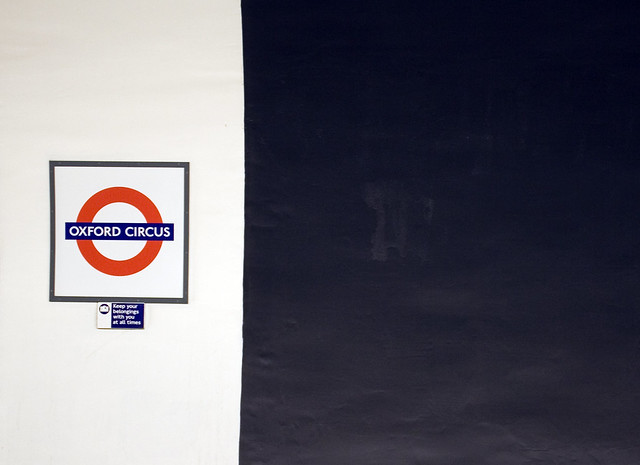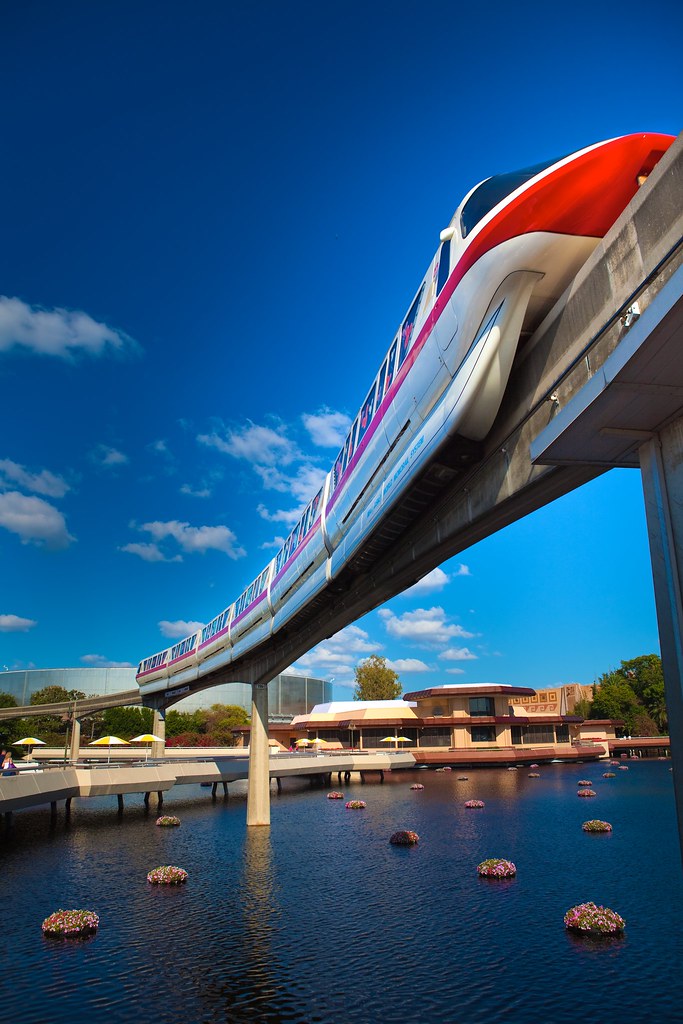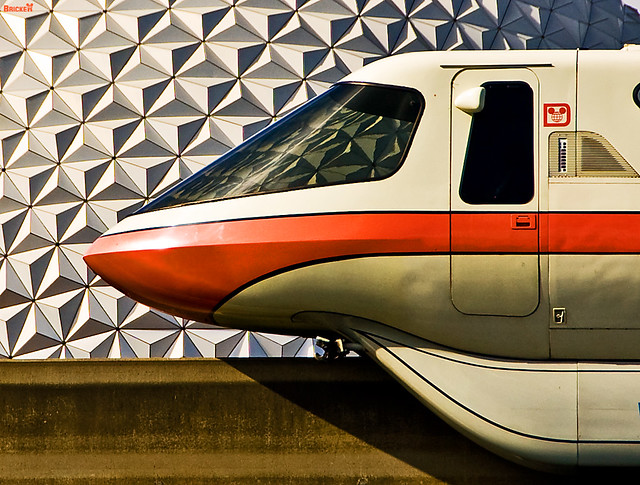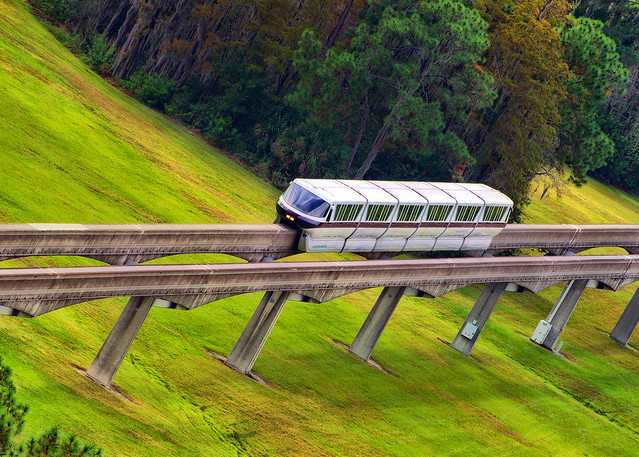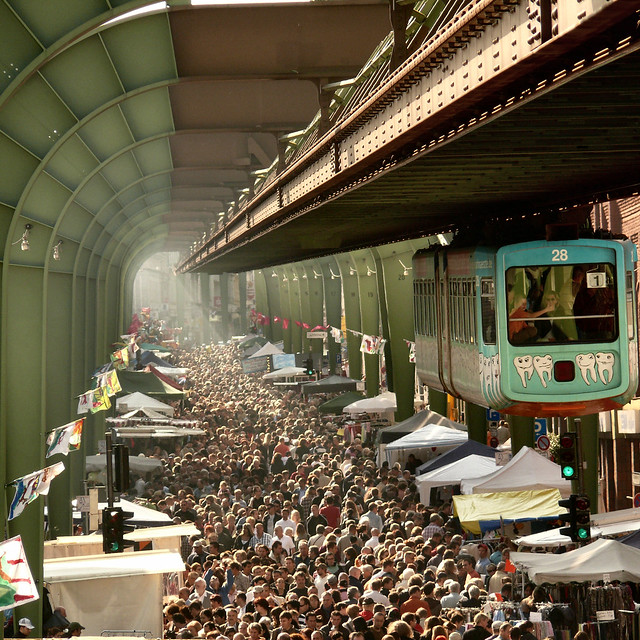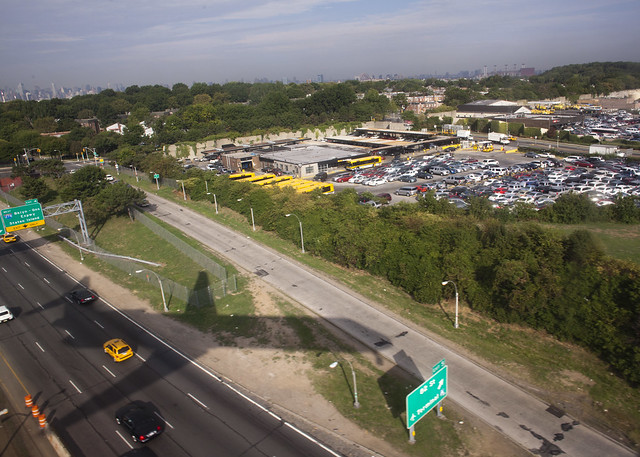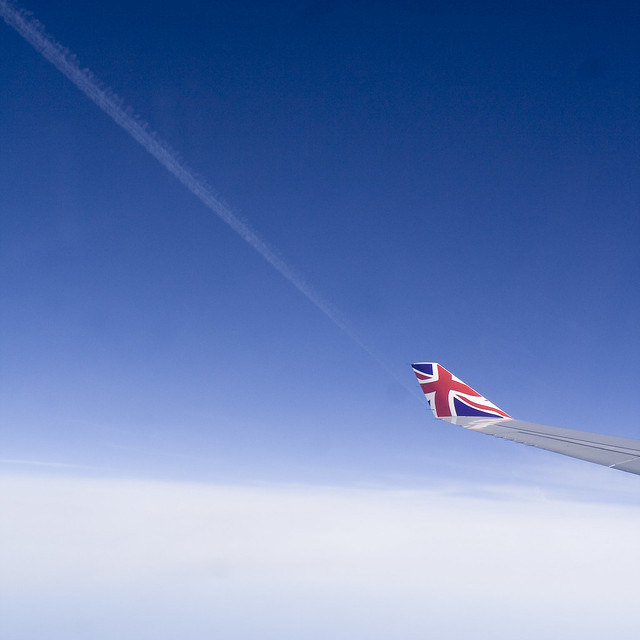If They Come, Will They Build It? The Need for Decentralized Transit – Next American City.
Category: Transportation
The Tube – BBC Two
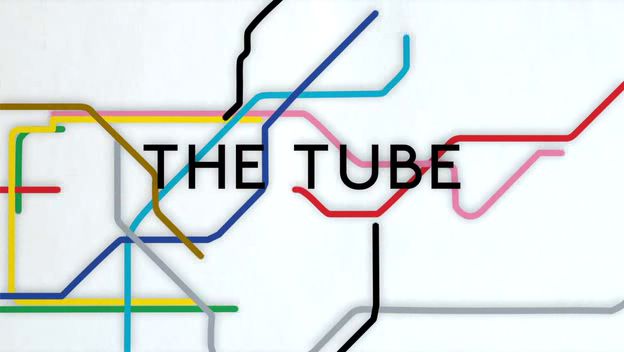
The Tube is a BBC Two television documentary which looks into the life of those who work and travel on London Underground. It premiered in February, but is just coming to India and is well worth watching to see behind-the-scenes footage of both the infrastructure but also the people who make the Tube go.
Please also see:
It’s all about the headways. Period
Part of the conventional wisdom about transit which prevents spending real money on quick headways is that “There’s no market. People aren’t using that route. Why should we be running empty buses?”
My quick answer to that old saw is that just as with roads, with transit, supply induces demand. If you offer a rich ‘connection pipe” (to garble Walker’s terminolgy) then people will use it and people will get used to the service and presto you have political support. People support things (politically) that they use.
It's all about the headways. Period. – City Comforts, the blog.
Monorail: Walt Disney World, Wuppertal Schwebebahn, Sydney
Government Accountability Office says Chris Christie lied about Access to the Region’s Core

For those of you following at home, we have been following the trials and tribulations of the now canceled Access to the Region’s Core transit rail tunnel – a new pair of tunnels under the Hudson River for New Jersey Transit. New Jersey Governor Chris Christie famously canceled the project in favor of shifting the more than $4 billion to the road transportation trust fund, eliminating the need to raise gas taxes (presently one of the lowest in the nation). The New York Times reports that Report Disputes Christie’s Reason for Halting Tunnel Project in 2010:
The report by the Government Accountability Office, to be released this week, found that while Mr. Christie said that state transportation officials had revised cost estimates for the tunnel to at least $11 billion and potentially more than $14 billion, the range of estimates had in fact remained unchanged in the two years before he announced in 2010 that he was shutting down the project. And state transportation officials, the report says, had said the cost would be no more than $10 billion.
Mr. Christie also misstated New Jersey’s share of the costs: he said the state would pay 70 percent of the project; the report found that New Jersey was paying 14.4 percent. And while the governor said that an agreement with the federal government would require the state to pay all cost overruns, the report found that there was no final agreement, and that the federal government had made several offers to share those costs.
In fact, the GAO report1 makes clear that the State of New Jersey was on the hook for 32% of the total cost – less than half of Gov. Christie’s exaggerated claim.2 The report also makes clear that the project cost did not materially change, but rather was being refined as more detailed information came to light.
While ARC had some flaws – chiefly being composed as a deep-cavern terminal which was not directly connected to the existing Penn Station – the project was necessary to relieving the Hudson River crossing bottleneck: currently one 15-minute train disruption in the existing tunnel can delay as many as 15 other NJT and Amtrak trains. The chief beneficiary was New Jersey Transit riders who would now have a one-seat ride to Manhattan; secondary effects would be less cars on the road (meaning faster commutes and less pollution) and an increase in demand for housing in New Jersey communities close to NJT stations. All of this was a net-positive for New Jersey.
But Governor Christie3 killed the project under the aegis of fiscal responsibility, but was really all about keeping taxes low:
Canceling the tunnel, then the largest public works project in the nation, helped shape Mr. Christie’s profile as a rising Republican star, an enforcer of fiscal discipline in a country drunk on debt. But the report is likely to revive criticism that his decision, which he said was about “hard choices” in tough economic times, was more about avoiding the need to raise the state’s gasoline tax, which would have violated a campaign promise. The governor subsequently steered $4 billion earmarked for the tunnel to the state’s near-bankrupt transportation trust fund, traditionally financed by the gasoline tax.
Canceling ARC was nothing more than a naked political gambit, and the GAO called the Governor on his deceit. In Gov Christie’s world, it is better to spend the money on short-term gains, than to invest in an infrastructure project which would create long-term stability in a state which depends on New York for its survival.
At what point do we carve the New York-Connecticut-New Jersey MSA4 out of New York and New Jersey to create the 51st State – the State of New York City? Because trying to coordinate rational land use and transportation policy across state lines is not working at all.
- Potential Impacts and Cost Estimates for the Cancelled Hudson River Tunnel Project, GAO-12-344, Mar 9, 2012 ↩
- Table 2: Proposed Funding by Source, as of April 2010, page 19 ↩
- I originally so much wanted to call Governor Christie the Corpulent King of Jersey, but that didn’t sound nice. So here it is, in a footnote ↩
- What’s a Metropolitan and Micropolitan Statistical Area? ↩
NextGen is Nice, but it won’t Necessarily Reduce Flight Time
The New York Times brings us an evergreen story, A Satellite System That Could End Circling Above the Airport:
Radar has proved to be reliable over the years. But air traffic controllers can be sure of the precise location of the planes they are directing only when their radar sweeps once every six seconds. To make up for that uncertainty, controllers keep wide buffers between flights. Satellite technology will eventually change that equation and allow planes to fly much closer to one another because they will broadcast their locations with more accuracy.
In effect, airports could increase capacity without building more runways because more planes could take off and land every hour.
The Times is talking about NextGen, a program which aims to transform America’s air traffic control system from an ground-based radar system to a satellite-based system.
But this won’t help in airport delays. And it certainly won’t help circling airplanes – maybe they will circle further away from the airport – but your flight time won’t be any less. Why? Flight time is a function of distance, weather, type of aircraft, departing and arriving airports. Generally airport capacity is, besides weather, the controlling factor. Airport capacity is a fixed commodity, a commodity especially concentrated in a few key airports – mostly centered in New York City.
All together now: the limiting factor constraining airport capacity are spatial: runways, taxiways and apron (gate) space (which is finite) and physical: aircraft type and performance, specifically engine wake vortex turbulence. The thrust from aircraft, such as the Airbus 380’s four engines just doesn’t disappear: the wake vortex of modern aircraft take significant time to dissipate. For an a380 arriving at an airport (knowing that not too many a380’s operate at any given moment), the minimum separation time for the next airplane is 4 minutes for light aircraft, and 3 minutes for a medium aircraft (based on ICAO Wake Turbulence Category). Similar requirements are necessary for departing aircraft. Add to this the time it take to land, taxi off the runway, and taxi to the gate then you have your spatial constraints. And constrained they are, especially on postage-stamp sized airports such as La Guardia which have limited runways, taxiways and gate areas.
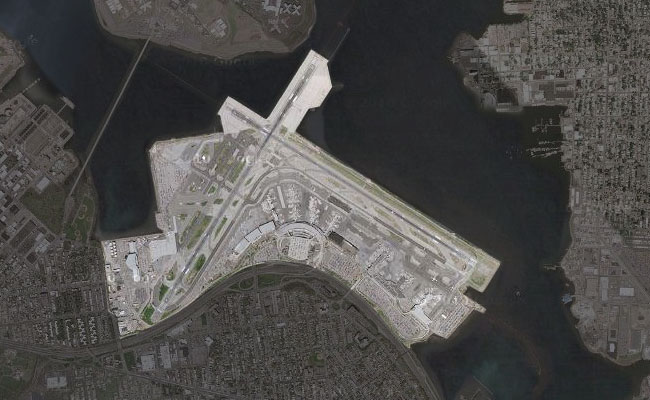
The way to alleviate flight delays is to either attack the supply or demand side of the airport problem. NextGen attacks the intersection between the two: creating a near-infinite amount of possible flight paths to connect the airport hubs. Yet it is the airports which are still the bottleneck. To increase airport supply you can either build new airports or runways, which is difficult due to cost and NIMBY activists; or reduce demand by reducing the number of flights – which has happened due to the economy – or by edict (which no one likes). Another way to redue demand is to fund alternative transportation – namely High Speed Rail. But that is for another post.
Part of this bottleneck is our own fault: we naturally want to leave and arrive at airports at times convenient to our schedules. I love the JFK-LHR flights because I can leave at 10pm and arrive at 7am, shower and take a meeting in the morning. But so does everyone else, so there is quite a rush hour for both departure and arrivals. Now multiply this throughout the world, and you have noticeable rush hours at the airports.
Then you add externalities such as weather, emergencies, and random acts of crazy which affects an interconnected system which is the modern airline system and you get today’s situation.
None of this will be alleviated by the NextGen system, which is useful in reducing flight delays but doesn’t help to alleviate airport delays.
Jet Airliner by Josef Hoflehner
L’Enfant Plaza Coffer
LIMTV: DoT’s SUPERTRAIN?

The LIMTV (linear induction motor test vehicle) is tested at the Department of Transportation’s high-speed ground test center (now owned and operated by Association of American Railroads) near Pueblo, Colorado, in March of 1973. The experimental vehicle was designed to operate at speeds up to 250 miles per hour, using electro-magnetic forces for noiseless propulsion.
While not exactly the SUPERTRAIN, the 1979 Love Boat-style show set on a huge nuclear-powered train zipping from NYC to LA which I’m obsessed with, the LIMTV undoubtably influenced SUPERTRAIN’S aesthetic. Except LIMTV actually helped pave the way for an actual product using linear induction-based systems, having found a niche with the aid of Bombardier’s Advanced Rapid Transit system. Notable installations are in Vancouver’s SkyTrain and NYC’s JFK AirTrain (below).
Q1 2009 Current Major Transportation Capital Projects in New York City
Over the weekend I was in a conversation discussing the different transportation capital improvements currently in process in the New York City Region. Below is a current list as of the First Quarter (Q1) of 2009 for all major capital improvements by the MTA and the Port Authority. If you step back, there are an amazing amount of infrastructure and transportation capital projects occurring in the NYC Region. Note: capital campaigns are separately funded from the operational budgets. The current MTA budgetary issues are operating, not capital. But without additional funding, in both operating and capital budgets, the current level of service the MTA provides will degrade back in to the 1970’s level of service.
Current Major Transportation Capital Projects in New York City:
South Ferry Terminal
- Status: Grand Opening Today
- New York City Transit (MTA)
- Budget – $530 million (Federal Transit Administration)
The South Ferry Terminal is a new station of the 1 Line in Lower Manhattan replacing the original turn-back loop which can only fit the first five cars. This project was slated to open in early 2009 but has been plagued with accessibility issues and other performance issues.
Today is the official Grand Opening
Second Avenue Subway
- Status: Phase 1 est. completion 2015
- New York City Transit (MTA)
- Current Budget – $337 million (Phase One only)
The first new subway line in over 30 years, the Second Avenue Subway is halfway through Phase One. Phase One includes new tunnels from 105th Street and Second Avenue to 63rd Street and Third Avenue, with new stations along Second Avenue at 96th, 86th and 72nd Streets. Once Phase One is complete, the Q train will be extended from its current terminus at Lex/63rd Street up Second Avenue stopping at 72nd, 86th, and 96th Streets. Phase Two (125th St. to 96th St.) is scheduled for 2014-2017, Phase Three (63rd St. to Houston St.) for 2015-2018 and Phase Four (Houston St. to Hanover Sqr.) 2017-2020. The main reason the project’s schedule is so long is the lack of secured funding.
7 Line Extension
- Status: tunnel boring began – est. completion 2010
- New York City Transit (MTA)
- Extension of the 7 Line west to Tenth Avenue then South to a new 34th Street Station.
- Current Budget – $2 billion (financed by NYC bonds)
Extension of the 7 Line to service the existing Jacob K. Javits Convention Center (the extension was originally proposed for the failed 2012 Olympic Bid and the failed NY Jets Stadium at Hudson Yards). Currently, there is a tunnel boring machine running north from 29th St/11th Ave.
East Side Access
- Status: Tunelling
- Project Completion 2015
- Long Island Railroad (MTA)
- Current Budget – $6.3 billion
East Side Access will bring Long Island Railroad service to Grand Central Terminal using the existing 63rd Street Tunnels and two new sets of tunnels connecting both ends of the 63rd Street Tunnels. One set of approach tunnels pass under the existing Sunnyside Yards while the other tunnels pass under the existing Metro North Tunnels on Park Avenue and terminate at Grand Central. Project is estimated to be complete in 2015.
Fulton Street Transit Center Project
- Status: Unknown
- New York City Transit (MTA)
- Linking 12 Downtown Subway Lines
- Current Budget – $1.4 billion ($497 million from HR-1 Stimulus Package)
Stations served by the 2, 3, 4, 5, A, C, E, J, M, R, W and Z services will be rehabilitated and connected via an east-west underground passageway designed by Grimshaw Architects. A high-visibility Transit Center will be constructed, with entrances on Broadway between Fulton Street and John Street. The station will be handicapped accessible.
World Trade Center Transportation Complex
- Status: Construction of subsurface tunnels
- Port Authority of New York & New Jersey
- New Commuter Rail Station
- Current Budget – $3.2 billion
Designed by Santiago Calatrava, this transit center will house the terminus for the PATH trains at World Trade. Initial foundations are complete and sections of the structure have been erected.
Access to the Region’s Core
- Status: initial contracts
- Port Authority of New York & New Jersey
- New commuter tunnels under the Hudson River to Penn Station
- Current Budget – $8.7 billion (NJ State $2.7 billion, PANYNJ $3 billion, $3 Federal)
ARC is a new two-tunnel (single track) project creating a single-seat trap for New Jersey Transit riders to Penn Station doubling the current capacity. Creation of two new Hudson River tunnels and new deep-cavity terminal connected to Penn Station. The first contracts were announced last week.
Moynihan Station
- Status: unknown
- Amtrak, New Jersey Transit
This project has a particular place in my heart, a project which typifies large capital construction in New York City. Last week Senator Schumer was seeking federal funding for Moynihan Station with Amtrak moving into the future Moynihan Station. Currently the project is in negotiations between the City, State, Federal governments and the two developers involved in the project Related and Vornado. Keep wishing.
